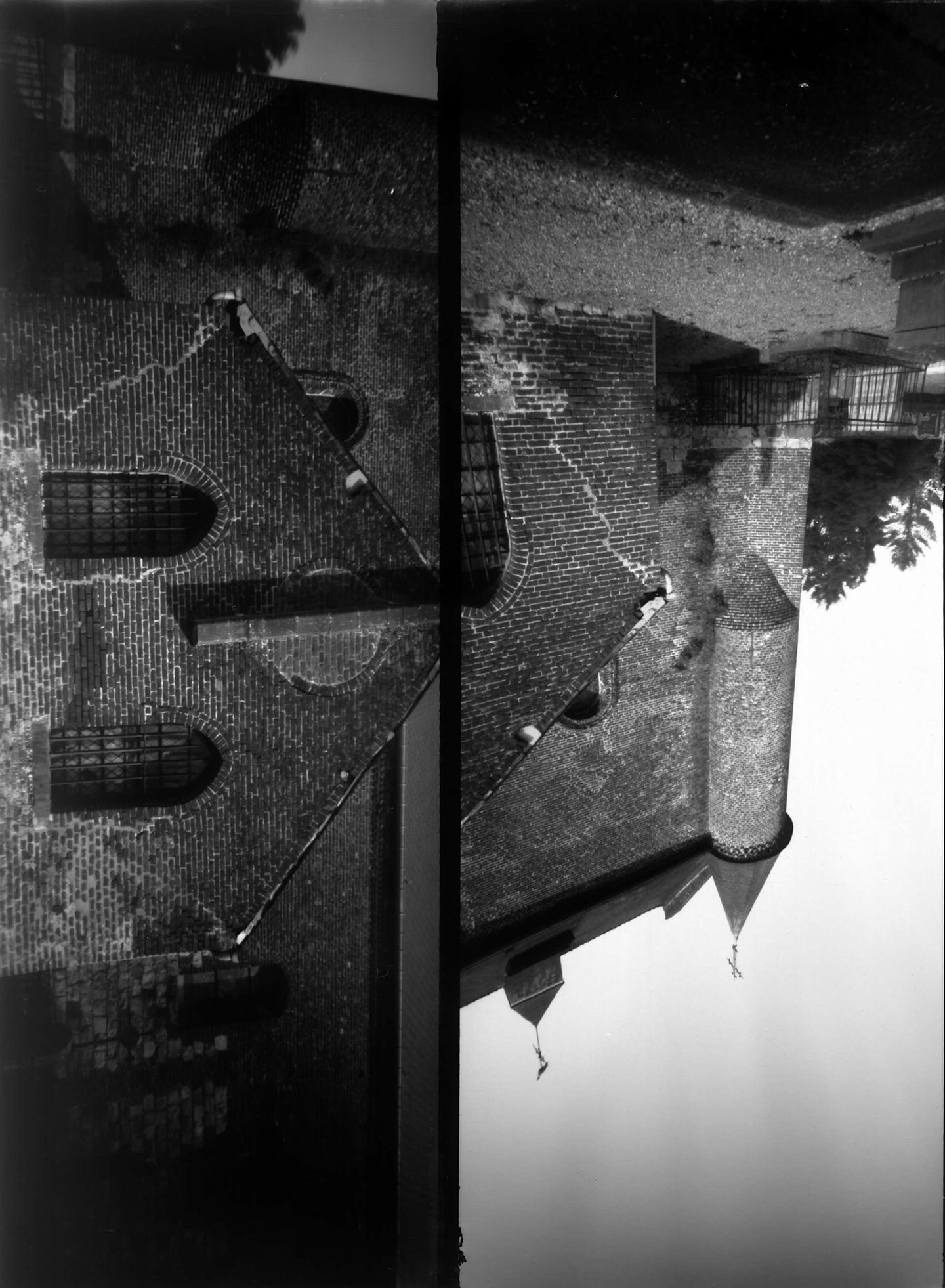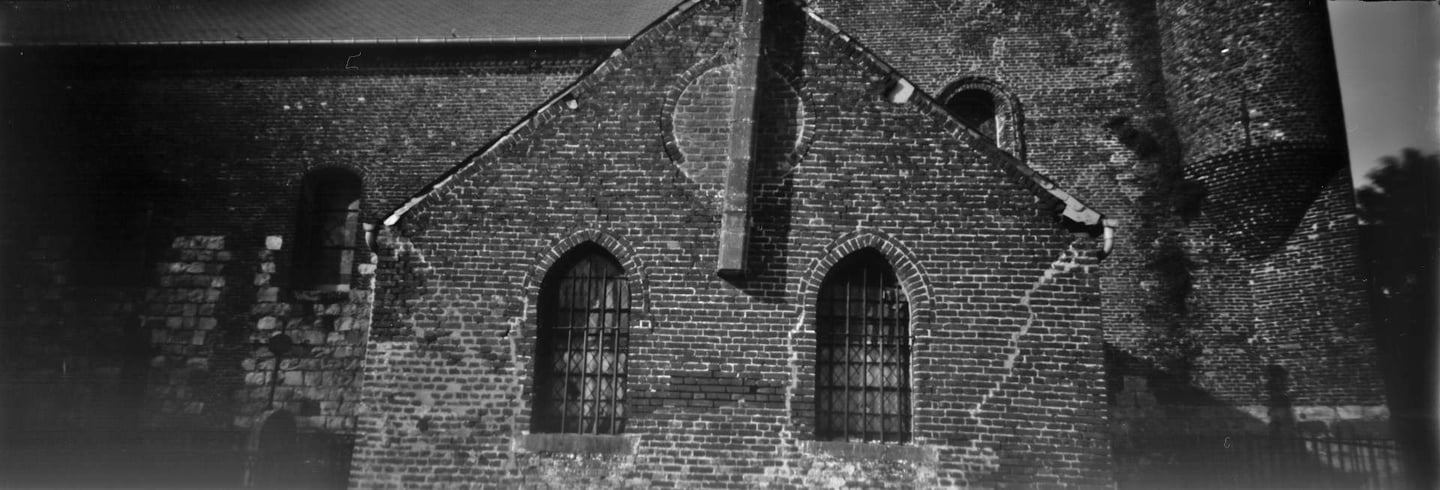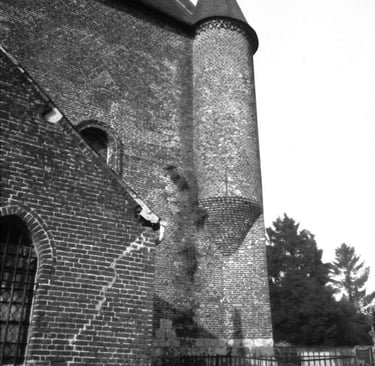March 27, 2024: Oops, I did it again :-)
Finally a day with a little sunshine, the perfect opportunity to test the brand new pinhole camera manufactured during this period of weather which is humid and overcast to say the least. A box for 24x30.5 cm paper, which can take 2 12x30 photos. Manufactured using the same system as that shown in the buiding section but in a larger format. So I tested with the fortified church of Malzy (France, Aisne, Thiérache). So what gives?


The raw image output from the scanner simply inverted to be positive




the images once improved.
No added sharpness however, only global exposure corrections. I place this box in the "good for service" section and I intend to use it again as soon as the weather becomes more lenient with the photon hunters. This start of the year is a real disaster for photography, at least here in the north of France.
For the tests the shutters were held by gaffer, all I have to do now is place two guillotines on the box and it will be perfectly usable for future adventures.
A few technical datas about this box:
Pinhole diameter: 0.48mm, "focal length": 130 mm so f/: 271.
The exposure time for the images is around 50 seconds plus a few added depending on the passage of clouds.
The advantage of pinhole cameras is that they can vary the exposure time, especially when using photo paper as a sensitive surface. One of the advantages of photo paper is that it is tolerant of exposure and does not have reciprocity issues like film does. If my light meter and my calculations indicate 50 seconds I have no additional correction to make. So far I have never had a problem with reciprocity, at least for exposures lasting up to 2 hours with Ilford Multigrade RC paper. Most "pinholers" say there is no reciprocity with paper, others say there is, my opinion is just one of many.
Want to know more about reciprocity? Wikipedia Basically, the longer a film is exposed, the less sensitive it becomes, which requires it to be exposed longer to have a well-exposed image.
The holes being drilled by hand I have the impression that they are closer to 0.45 mm than 0.5 and that the overall sharpness is rather satisfactory. What would a generation of large format pinhole cameras look like with a hole diameter of 0.45 mm or even 0.40 instead of 0.48 given by mrpinhole.com? Theoretically there should be no diffraction problem, it should improve the sharpness to the detriment of the obviously longer exposure time. Is it true? Is it worth it? I think I'll have the answer quickly... The weather may be terrible for photography but it doesn't stop me from thinking.
On the menu of the next neuronal manipulations, the idea of a paper holder is taking its course. This accessory would not only allow you to be able to walk around with a reserve of photos to take with a single box but also to approach the design of an hybrid device allowing you to take classic photos as well as lumen print and, why not, photography with rapid cyanotype. A sliding box device, like those used before bellows became the norm. We remain in the simplicity of photographic antiques. In addition to the versatility of the type of photos, this type of camera also allows focusing. With apertures of 3 to 5 mm or more we can no longer be satisfied with only taking sharp images at infinity, the depth of field is no longer as enormous as with a pinhole camera, the focus becomes a need. A paper holder in Syltech and Isorel without light leaks, for the moment it's still blocking but each failure at least indicates what should not be done and increases the chances of future success. Another advantage of the paper holder is the simplification of manufacturing. No more need for an internal box in an external box, only the external box would remain.
